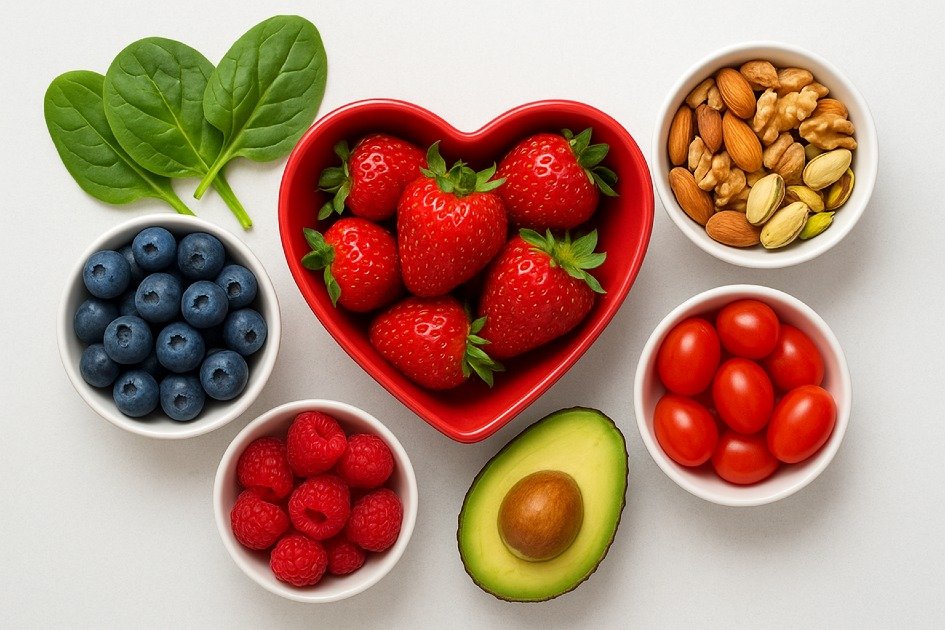Healthy heart is crucial for overall well-being, as it plays a significant role in our lives.
A heart-healthy diet can lower cholesterol, balance blood pressure, and reduce inflammation, which are the three main causes of heart disease.
By eating heart-healthy foods consistently, you can protect arteries, strengthen vessels, and improve circulation.
Harvard Health recommends a heart-healthy eating style that includes minimally processed vegetables, fruits, whole grains, and beans.
By swapping processed snacks for nuts, grilled fatty fish for fried meals, and using extra-virgin olive oil, you can feel more energetic and resilient.
Feeding your heart with antioxidant-rich foods helps you stay stronger and live longer.
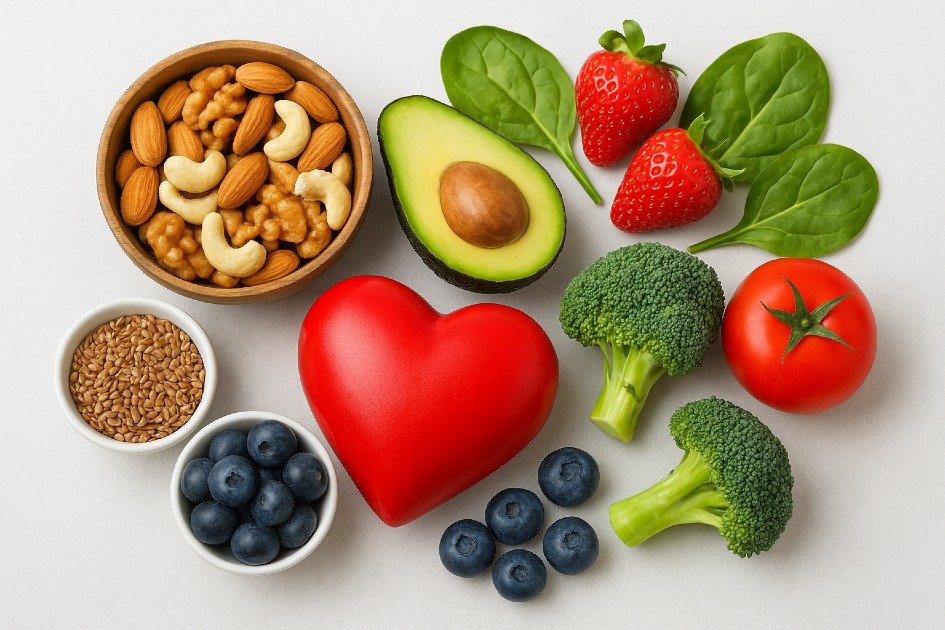
The Power of Nutrition in Heart Health
Nutrition plays a crucial role in maintaining heart health, with the right foods reducing risk and poor choices negatively impacting health. Slight changes in diet can significantly improve cardiovascular function.
How Food Choices Directly Impact Your Cardiovascular System
The cardiovascular system, like a highway, is clogged by processed foods high in sugar, sodium, and unhealthy fats, stiffening arteries and forcing the heart to work harder.
Fast food, sugary snacks, and processed foods are high in trans fats and salt, causing plaque buildup, poor circulation, and increased heart strain.
Replace harmful foods with nourishing ones like whole grains, lean proteins, and antioxidant-rich fruits to strengthen blood vessels and improve flow, ensuring smooth cardiovascular system operation.
When I shop, I see my grocery cart as my energy source for the week. Instead of tossing in chips, I grab a bag of almonds. This simple swap gives me steady energy and helps keep my blood pressure in check.
The Role of Cholesterol, Blood Pressure, and Inflammation in Heart Wellness
Maintaining a balance between cholesterol, blood pressure, and inflammation is crucial, but when these factors rise, serious issues can arise.
High LDL cholesterol, high blood pressure, and inflammation from fried foods and sugary drinks increase the risk of heart disease, sometimes without apparent symptoms until later.
Introduce leafy greens like spinach to reduce blood pressure, salmon and flaxseeds provide omega-3s, and olive oil boosts HDL cholesterol, available in quality extra-virgin olive oil for daily cooking or salad dressings.
I noticed a big change in my cholesterol after I stopped using butter and started spreading olive oil on my morning toast. That small switch showed me how simple choices can be without feeling deprived.
A Gentle Nudge
Your food choices not only provide calories but also serve as a foundation for a healthier and more energetic life.
Harvard Health advises balancing calorie intake with physical activity to prevent weight gain, a risk factor for cardiovascular disease, as more calories are consumed than burned off.
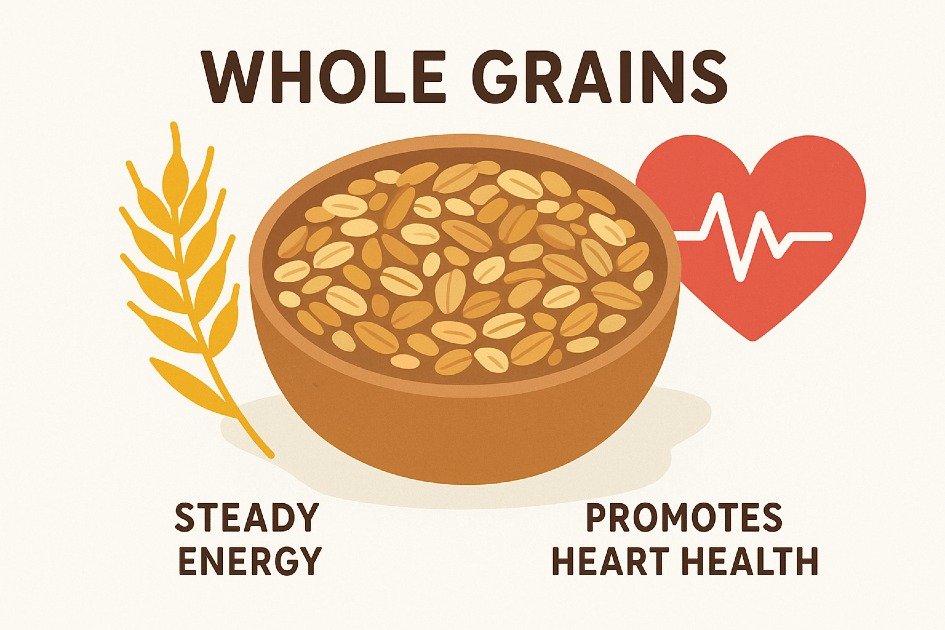
Whole Grains: The Steady Energy Protectors
Whole grains are a powerful choice for health, providing steady energy, lowering cholesterol, and maintaining clear arteries, unlike refined grains that leave you feeling sluggish.
Why Whole Grains Matter for Heart Health
Why it matters:
Whole grains, rich in fiber, vitamins, and minerals, reduce cholesterol, balance blood sugar, and combat inflammation, thereby reducing the risk of high blood pressure and artery damage.
How to do it:
- Swap sugary cereal for a bowl of oatmeal to start your day.
- Choose whole grain bread instead of white bread to keep your energy steady.
- Build your stir-fries and salads on a base of brown rice or quinoa.
- Toss whole grain pasta with your favorite sauce for a hearty meal.
Oats: A Comfort Food That Lowers Cholesterol
Why it matters:
Oats are a beneficial source of soluble fiber, aiding in the removal of cholesterol and maintaining fullness without causing blood sugar spikes.
How to do it:
- Boil rolled oats in almond milk and add fresh berries on top.
- Make overnight oats the night before to save time.
- Swap in oat flour when making pancakes or muffins.
- Stir in a spoonful of flaxseeds or chia seeds for more energy.
Quinoa and Brown Rice: Fiber-Packed Staples
Why it matters:
Quinoa and brown rice are versatile, easy-to-prepare grains with high protein content and magnesium content, providing essential nutrients for heartbeat regulation.
How to do it:
- Swap couscous or white rice for quinoa in your side dishes.
- Stir brown rice into your soups or casseroles for extra flavor and nutrition.
- Top a grain bowl with roasted veggies and lean protein.
- Grab pre-cooked frozen brown rice to make fast weeknight dinners.
Making Whole Grains Part of Your Weekly Routine
Why it matters:
Consistency is key to lasting change, and incorporating whole grains into your diet can strengthen your heart and provide sustainable energy.
How to do it:
- Start by eating one or two meals with grains each week.
- Stock whole grain bread and wraps for quick, healthy lunches.
- Switch up your grains to keep meals exciting and nutritious.
- Combine grains, protein, and vegetables in each meal to fuel your body with balanced nutrition.
When I swapped white rice for quinoa, my afternoon energy crashes faded. My digestion got smoother, and I felt lighter after meals.
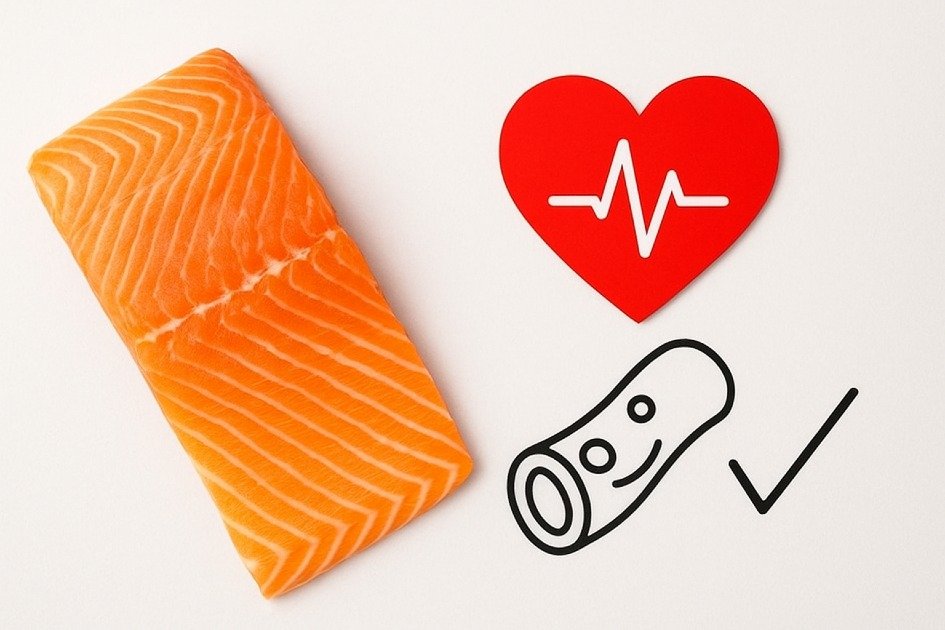
Fatty Fish: Omega-3 Heroes for Your Arteries
Fatty fish, rich in omega-3 fatty acids, are powerful in protecting the heart by actively guarding arteries, promoting flexibility and clearness.
Why Omega-3s Matter for Heart Health
Why it matters:
Omega-3s are essential fats essential for reducing inflammation, maintaining blood vessel elasticity, and reducing heart strain, preventing artery hardening and increasing cardiovascular risk.
How to do it:
- Eat fatty fishlike salmon, mackerel, sardines, or tuna at least twice a week.
- Choose wild-caught fish when you can—they have more omega-3s.
- If fresh fish costs too much, choose frozen or canned options.
Why Eating Fish Twice a Week Changes Everything
Why it matters:
Regular consumption of fatty fish is crucial for long-term health, as it maintains healthy omega-3 levels, protecting against artery damage.
How to do it:
- Add a regular ‘fish night’ to your weekly meals so it becomes a healthy habit.
- Try simple meals first, such as baked salmon or grilled mackerel.
- Stock canned sardines or tuna in your pantry for fast, protein-packed meals or snacks.
Why Fish Beats Supplements Alone
Why it matters:
Supplements may not provide the same synergistic effect as whole foods, but fatty fish provides protein, vitamin D, and selenium, enhancing heart strength.
How to do it:
- If eating fish is hard for you, take a trusted omega-3 supplement instead.
- Pick supplements that are purity-evaluated to stay safe from harmful heavy metals.
- Take fish oil supplements only as a backup. They cannot replace the full benefits of eating real fish.
Why Affordable Options Make This Change Realistic
Why it matters:
Fish is not always expensive, as budget-friendly options like canned tuna, sardines, and frozen salmon offer the same heart-protecting nutrients without breaking the bank.
How to do it:
- Stock up during store sales to save money and cut future shopping trips.
- Cook frozen fish fillets in soups, quickly stir-fries, or tacos to add flavor and variety.
- Try canned sardines on whole-grain toast—they are affordable, tasty, and keep you full.
Why Flavor Makes the Habit Stick
Why it matters:
Fatty fish is a versatile and easy-to-savor food that can be easily adapted to various flavors, making it a simple and enjoyable option.
How to do it:
- Season salmon with fresh lemon and herbs, then bake for a light, flavorful meal.
- Grill mackerel with garlic and olive oil to enjoy a rich, smoky flavor.
- Mix sardines with avocado and whole-grain crackers.
Why Small Changes Add Up
Why it matters:
Starting with one fish meal a week can significantly improve your health by accumulating omega-3s, promoting clearer arteries and stronger heart.
How to do it:
- Swap out one meat-based dinner with salmon or tuna.
- Swap croutons for canned sardines to boost your salad with protein and omega-3s.
- Commit to one change this week, then build from there.
I eat fatty fish every day because it keeps me strong. I choose budget-friendly options, cook easy recipes, and make it a habit for long-term health.
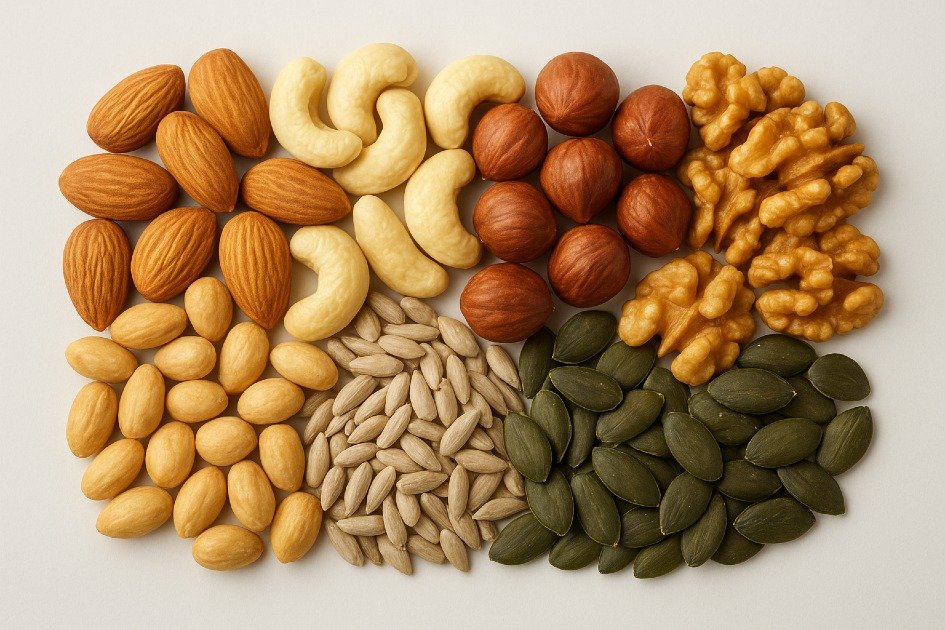
Nuts and Seeds: Small Snacks with Big Benefits
Nuts and seeds are a healthier snack option for heart health, providing essential nutrients without overwhelming the body, making them a fantastic addition to daily routines.
Why Nuts Keep Your Heart Happy
Why it matters:
Nuts, rich in monounsaturated and polyunsaturated fats, work with the body, reducing LDL cholesterol, boosting HDL cholesterol, lowering heart disease risk, providing long-lasting energy, and supporting brain function and cardiovascular strength.
How to do it:
- Top your morning oatmeal with crushed cashews or pecans for a crunchy, protein-packed boost.
- Choose roasted nuts instead of processed snacks to satisfy cravings.
Seeds: Tiny but Mighty Protectors
Why it matters:
Seeds, including flaxseeds, chia seeds, and pumpkin seeds, are rich in omega-3 fatty acids, fiber, and plant-based protein, which are essential for heart health.
How to do it:
- Add ground flaxseeds to your smoothie or yogurt for a quick boost of fiber and omega-3s.
- Mix chia seeds into overnight oats for extra crunch and nutrients.
- Roast pumpkin seeds at home for a crunchy snack.
Portion Control: Avoiding the Pitfall
Why it matters:
Mindful eating, incorporating nutrient-rich nuts and seeds into your diet, is crucial for weight management and heart health, as overeating can lead to heart stress.
How to do it:
- Eat just one small handful—about ¼ cup—each time.
- Divide nuts into small reusable containers to avoid overeating.
- Combine nuts with fruit to get fiber, protein, and healthy fats in every bite.
Making Heart-Healthy Habits Stick
Why it matters:
Consistency in eating habits, such as incorporating nuts and seeds into your weekly routine, is crucial for maintaining cholesterol and inflammation levels, and promoting heart health.
How to do it:
- Try swapping croutons for sunflower seeds in your salad.
- Swap regular flour for almond flour to make heart-healthy baked treats.
- Bring a trail mix of nuts and dried fruit on road trips instead of processed snacks.
I swapped chips for mixed nuts. Now, I have steady energy, better cholesterol, and a healthier, more balanced lifestyle.
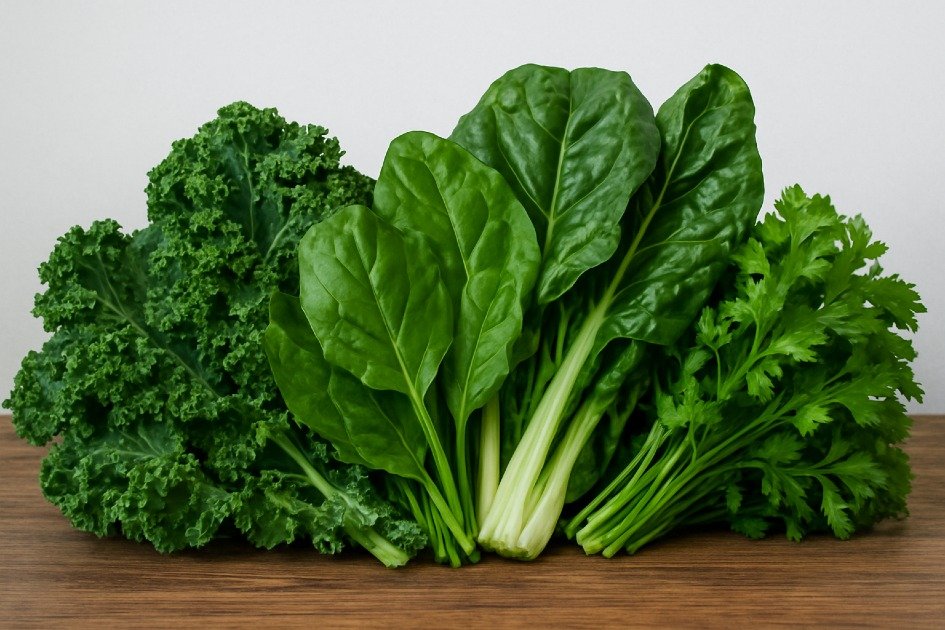
Leafy Greens: Nature’s Artery Cleaners
Leafy greens, rich in fiber, antioxidants, and plant compounds, protect the heart by acting as natural scrubbers for arteries. They can be added to your routine without stress.
Why Leafy Greens Matter for Heart Health
Why it matters:
Leafy greens, rich in nitrates and vitamin K, aid in inflammation reduction, blood pressure reduction, and smooth blood flow, promoting heart pumping and preventing calcium accumulation in arteries.
How to do it:
- Blend a handful of spinach into your morning smoothie to power up your nutrients.
- Add kale to soups and stews for a rich taste and satisfying bite.
- Try swapping tortillas for collard greens. They make a low-calorie, heart-healthy wrap packed with fiber and nutrients.
- Stock frozen greens to make fast, healthy dinners any night.
I make slight changes every day, and over time, these make me stronger and give a steady boost.
Fiber: The Heart’s Best Friend in Leafy Greens
Why it matters:
Leafy greens’ fiber help flush out cholesterol, balances blood sugar, and reduce heart strain by preventing clogged arteries and reducing the risk of heart strain over time.
How to do it:
- Stir chopped kale or collard greens into your rice or grain bowls for a boost of vitamins and fiber.
- Add a layer of spinach under your sandwich fillings to boost nutrients effortlessly.
- Sauté greens in olive oil with garlic for a fast, healthy side.
- Try adding beans or nuts to your salads. This boosts fiber and makes them more filling.
Every extra bite of greens shields me from hidden damage.
Antioxidants: Shielding the Heart from Stress
Why it matters:
Leafy greens, rich in antioxidants like vitamin C, beta-carotene, and lutein, serve as a protective shield against oxidative stress, a major cause of heart disease.
How to do it:
- Add spinach and blueberries to your smoothie for a powerful antioxidant boost.
- Bake kale with a light drizzle of olive oil for a crunchy, healthy snack.
- Stir collard greens into vegetable soups to boost flavor and nutrients.
- Add lemon juice to your greens to help your body absorb more nutrients.
I fill my plate with colorful foods to keep me strong and healthy.
Making Greens a Habit
Why it matters:
Eating more greens does not require significant changes; small adjustments are more sustainable and less intimidating, making them an effortless part of your meals.
How to do it:
- Grab pre-washed spinach bags to save time and eat healthy on busy days.
- Mix chopped leafy greens into your scrambled eggs or omelets for a nutrient-packed breakfast.
- Switch between spinach, kale, arugula, and collard greens to keep your meals fresh and healthy.
- Add fresh greens to casseroles or pasta bakes with easy meal-prep recipes.
I eat leafy greens regularly. Adding them to my meals each week keeps my diet healthy.

Colorful Berries: Sweet Antioxidant Protectors
Berries are a heart-healthy food rich in antioxidants, fiber, and nutrients, promoting artery health and reducing inflammation. They also help protect against oxidative stress, making them a convenient addition to daily routines.
Why Antioxidants in Berries Protect Your Heart
Why it matters:
Regular consumption of berries, rich in antioxidants like anthocyanins and flavonoids, can help neutralize oxidative stress, which damages cells, inflammation arteries, and increases heart disease risk.
How to do it:
- Add fresh blueberries to your oatmeal or yogurt.
- Carry dried strawberries or cranberries in your bag to fuel your body fast.
- Replace sugary treats with a small bowl of fresh berries topped with a little dark chocolate.
- Mix fresh raspberries, spinach, and almond milk in a blender for a nutrient-packed smoothie.
Why Fiber in Berries Balances Cholesterol
Why it matters:
Berries’ soluble fiber helps manage cholesterol, promoting clearer arteries, stable blood pressure, and less strain on the heart.
How to do it:
- Swap processed cereals for high-fiber foods and add fresh blackberries on top.
- Top a fresh green salad with sweet, sliced strawberries for a boost of vitamins and natural sweetness.
- Eat raspberries with a handful of almonds for fiber and healthy fats in one snack.
- Bake whole-grain blueberry muffins instead of eating sugary pastries.
Why Polyphenols in Berries Calm Inflammation
Why it matters:
Berries’ polyphenols have natural anti-inflammatory properties, reducing heart inflammation and improving circulation, resulting in fewer heart disease flare-ups and a stronger defense against heart disease.
How to do it:
- Steep green tea with fresh berries.
- Blend frozen berries into your smoothie to fight inflammation fast
- Grill salmon and brush it with a sweet blackberry glaze for a tasty boost of omega-3s and antioxidants.
- Create a delicious homemade raspberry chia jam without any added sugar.
Why Small Steps with Berries Make a Big Difference
Why it matters:
Regular berries consumption can lead to improved heart health, energy, blood pressure, and skin, demonstrating the impact of simple, colorful choices on overall health.
How to do it:
- Eat one serving of berries at least three times a week to boost your health.
- Keep frozen berries stocked so you can grab them anytime.
- Let kids choose fresh berries at the market to make healthy eating fun and interactive.
- Switch between blueberries, strawberries, raspberries, and blackberries to get all their health benefits.
I love adding blueberries to my oatmeal. They give me energy and curb my sugar cravings.
Recap: Building a Weekly Plate for a Stronger Heart
Heart health is a daily responsibility, and incorporating heart-healthy foods into your diet can help it maintain its rhythm and resilience.
Consuming leafy greens, nuts, and fatty fish is not just about nutrition; it is about elevating energy, mood, and cardiovascular fortitude.
Harvard Health emphasizes that regular exercise is crucial for maintaining good health, as it not only boosts mood and sleep but also reduces the risk of heart disease, stroke, diabetes, and dementia.
Changing processed oils to olive oil, chia seeds, or dark chocolate can improve blood flow, reduce inflammation, and fortify the heart’s natural defenses.
Mixing beans, berries, avocados, and whole grains can also help combat stress, cholesterol, and arterial wear.
Start planning meals, experimenting with recipes, and embracing mindful eating to nourish your heart. Engage with the community to share heart-healthy swaps and inspire others.
Frequently Asked Questions
How many heart-healthy foods should I eat weekly?
To promote cardiovascular wellness, consume 5-7 servings of vegetables, 2-3 servings of fatty fish, and nuts/seeds daily, along with fiber-rich legumes, whole grains, and antioxidant-packed fruits.
Can I get the same benefits from supplements instead of whole foods?
Supplements can supplement diets, but they cannot replace whole foods’ synergistic effects. Combining supplements with fatty fish or leafy greens enhances heart protection.
Are all fats bad for heart health?
Monounsaturated and polyunsaturated fats are essential for heart function and lowering LDL cholesterol, while trans and saturated fats can accelerate plaque formation. Opt for olive oil or nut blends.
What are the best snacks for a strong and healthy heart?
Heart-smart snacking prioritizes nutrient density and minimal processing, featuring organic nut packs, fresh berries, avocado, roasted chickpeas, and dark chocolate with 70% cocoa.
How soon can dietary changes improve heart health?
Consistent heart-healthy eating, including whole grains, fatty fish, leafy greens, and antioxidant-rich berries, can improve blood pressure, cholesterol levels, and energy levels within 4-12 weeks.
Can plant-based foods alone support a healthy heart?
Plant-centric diets rich in legumes, whole grains, leafy greens, nuts, and seeds reduce cardiovascular risk, lower cholesterol, control blood pressure, and maintain vascular elasticity, with convenient plant-based protein powders.
Are there beverages that support heart health?
Green tea, pomegranate juice, and moderate red wine are rich in flavonoids and polyphenols, providing cardiovascular benefits. Avoid sugary drinks and excessive caffeine.
How can I track my heart health at home?
Smart devices and home monitors help track vital indicators like blood pressure, heart rate, and cholesterol levels, ensuring heart resilience and a nutrient-rich diet.

